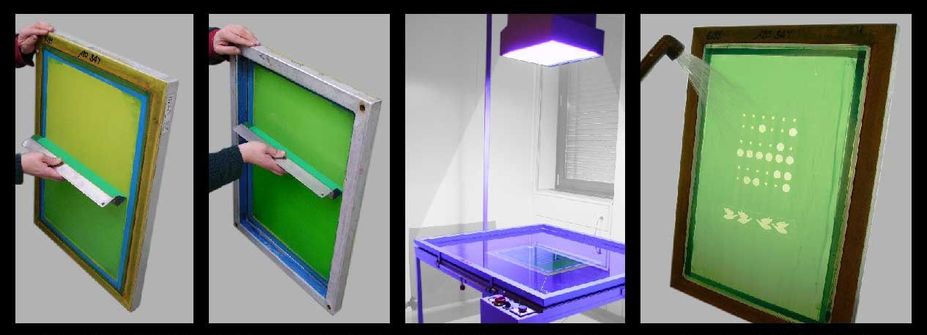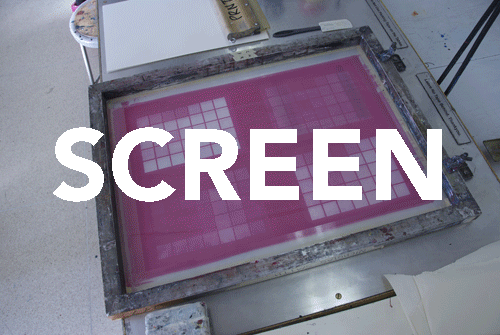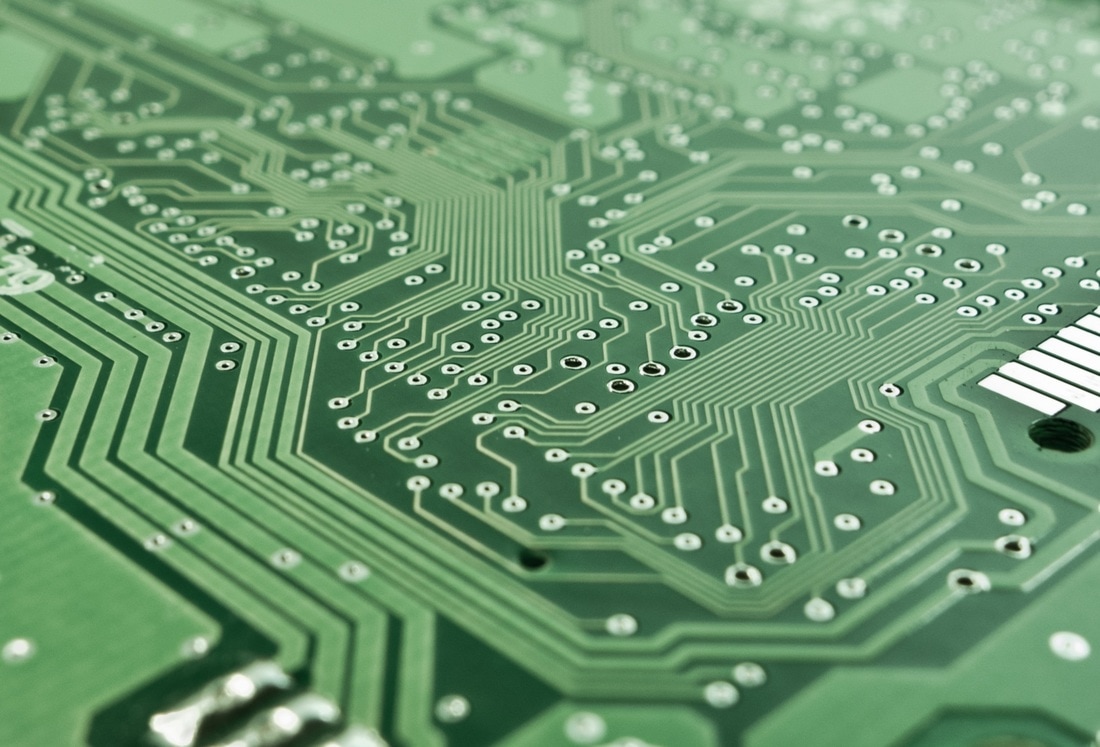|
by Elena Renken '19  How do multicolor images end up on a graphic T-shirt? How do we accurately precisely label measurements on medical instruments? And how are the intricate conductive paths on the surface of microchips put in place? All these designs, and a growing number of others, rely on one process: screen printing. The method is fairly simple: A screen made of fine mesh is coated with emulsion, and a design is laid over it in a machine that gives off ultra-violet light. The UV rays can’t penetrate the dark design, so they harden only the emulsion on the uncovered part of the screen. When the screen is washed out afterwards, only the soft emulsion that was under the design falls away.  credit: Nicholas Smith credit: Nicholas Smith The screen is now bare only where the drawing or design covered it, so ink can be pushed through the mesh to recreate the design countless times. Designs with multiple colors are printed with multiple layers, aligned so the patterns match up at the corners. The beauty of of this method lies in its versatility: designs of almost any size can be screen printed countless times onto a wide range of materials, including everything from glass to fabric to plastic. The text on museum walls that accompanies art exhibits is often screen printed directly onto the wall. Screen printing is commonly associated with the brightly colored posters of Andy Warhol and graphic designs printed on T-shirts, but it is vital to the creation of many other products. Medical devices are often screen printed with markings to offer guidance or measurements, for example. But even newer applications came with the use of modified inks. In the creation of electronics, inks have been altered to become conductive. The precise routing of current along lines of conductive ink allows for the printing of microchips.
1. Goldberg H, Brown R, Liu D, Meyerhoff M. Screen printing: a technology for the batch fabrication of integrated chemical-sensor arrays. Sensors and Actuators B: Chemical. 1994;21(3):171-183.
2. http://www.dropsens.com/en/screen_printed_electrodes_pag.html 3. https://www.fespa.com/news/industry-news/the-future-of-screen-printing.html 4. http://www.dalcoscreenprint.com/screenprint.htm 5. http://airconway.com/wonders-of-digital-screen-printing/
3 Comments
Michelle
3/18/2017 05:50:03 pm
This is a really cool topic - thank you for sharing your interests. I can't wait to see the future of screen printing!!
Reply
1/21/2022 12:58:53 am
I am thankful that this post reminded us that when looking for screen printing services, it is advisable we ensure they are experienced. It makes sense as that way, we can evaluate their past work. Since I need custom t-shirts made, I will definitely look for a reliable screen printer as the quality is unmatched.
Reply
Are you still stuck with paper labels for your product’s bottles meanwhile your rivals have moved to direct prints on theirs?
Reply
Leave a Reply. |

